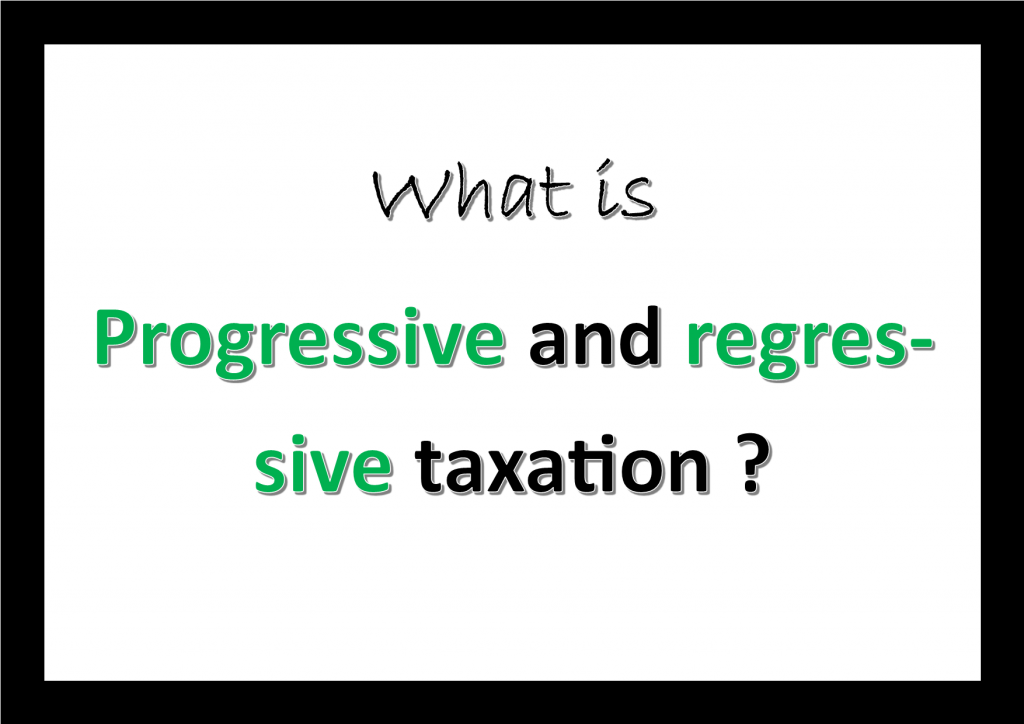Progressive tax
Progressive tax is the one where the tax rate increases with the taxpayer’s income. The correct interpretation is that the tax liability for a taxpayer increases with his income in terms of proportion of income and in absolute amount.
|
Progressive and regressive tax A progressive tax is a tax where the tax rate increases with increase in the taxpayer’s income. Here, individual who get high income pay higher proportion of there income as tax. On the other hand, in the case of regressive tax, tax rate decreases with increase in income. |
Tax burden of the taxpayer also goes up when the tax is progressive.
An example for progressive taxation is: 10% tax rate for income of Rs 2 lakh, 20% for Rs 5 lakh and 30% for Rs 10 lakh. Here, the tax liability or the absolute amount as well as the proportion of income to be paid as tax increases with income of the taxpayer.
| Example for progressive tax | |
| Income Slab | Tax rate |
| Rs 2.5 lakh to Rs 5 lakh | 10% |
| Rs 5 lakh to Rs 10 lakh | 20% |
| Above Rs 10 lakh | 30% |
Ideally, the tax system should be progressive, and it should not be regressive.
Regressive tax
In the case of regressive tax, the tax rate decreases with increase in income. Here, the tax liability of the taxpayer decreases with increase in his income. Or in other words, the proportion of his income to be paid as tax decreases with increase in income.
For example, suppose, there is 30% tax for Rs 2 lakh, 20% for Rs 5 lakh and 10% for Rs 10 lakh. Here, the tax liability or the amount of the income to be paid as tax decreases with increase in income.
| Example for regressive tax | |
| Income Slab | Tax rate |
| Rs 2.5 lakh to Rs 5 lakh | 30% |
| Rs 5 lakh to Rs 10 lakh | 20% |
| Above Rs 10 lakh | 10% |
The above examples are just general and easy to understand demonstrations. Sometimes, progressiveness and regressiveness are measured in a much complex way as well by estimating the relative tax burden.
The tax rates may be proportional as well. Here, tax rate is same for all slabs of income.
Progressive and regressive tax are interpreted in a much broader angle as well. For example, when the tax system gets sizable revenue from low income people, we can say that the tax system is collectively regressive. Ideally, tax revenue should come from the rich people to ensure progressiveness. A progressive tax system is beneficial for the poor people.
*********










